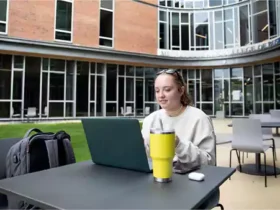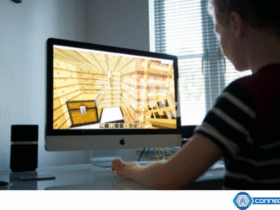Introduction
In the rapidly changing world of technology, art and robotics are no longer separate disciplines. One of the most exciting examples of this merging of creativity and engineering is robots dot to dot Nattapong. At its core, this concept takes the traditional dot-to-dot puzzle we all enjoyed as children and transforms it into a futuristic art form powered by robotics and artificial intelligence. It is not just about connecting dots; it is about reimagining the way we learn, create, and interact with technology. This fascinating approach combines education, innovation, and artistry, making it appealing for students, educators, engineers, and art enthusiasts alike.
Who Is Nattapong?
The name behind robots dot to dot Nattapong is Nattapong, a creative thinker and innovator passionate about combining technology with art. While robotics has long been associated with manufacturing, automation, and industrial work, Nattapong recognized that robots could also inspire joy, creativity, and education. His vision was to make robotics more interactive, approachable, and engaging by turning them into tools for creativity rather than just machines for production.
By blending dot-to-dot art with robotic technology, Nattapong has given people of all ages a way to appreciate both the technical and artistic side of innovation. His approach demonstrates how robotics can be fun, educational, and artistic while still rooted in engineering principles.
What Is Robots Dot To Dot Nattapong?
At its simplest definition, robots dot to dot Nattapong is the use of robots to automatically create dot-to-dot drawings. Instead of a human hand connecting numbers or points on paper, a robotic arm or programmed machine completes the task with accuracy and speed. The design may start from a simple image or pattern, which is then converted into a series of dots using software. Once the sequence is generated, the robot connects those dots flawlessly, creating a final picture that resembles the classic puzzle but with a modern, automated twist.
This process is not just about entertainment. It represents how art, robotics, and artificial intelligence can intersect to open up new opportunities for education and design. From classrooms to exhibitions, robots dot to dot Nattapong has quickly become a symbol of how the future of art is evolving with technology.
Evolution Of Dot-To-Dot Art
Dot-to-dot art has a long history as a recreational activity, especially for children learning numbers, sequencing, and hand-eye coordination. For decades, it has been used as a fun way to teach problem-solving while also encouraging creativity. However, the traditional approach was limited to pen and paper.
Over time, digital tools began to reinvent dot-to-dot puzzles, making them available online and through mobile apps. The next leap forward was integrating robotics and AI, which allowed dot-to-dot to become an interactive and educational experience far beyond the printed page. Robots dot to dot Nattapong builds on this evolution, transforming a nostalgic activity into a futuristic practice with limitless creative potential.
How Robots Dot To Dot Nattapong Works
The process of creating robots dot to dot Nattapong involves both technology and creativity. It typically begins with selecting an image or design. This image is then processed by software that converts it into a set of numbered dots. The dots serve as coordinates that guide the robot in connecting them systematically.
Once the pattern is ready, a robotic arm, drawing robot, or other automated tool begins tracing the lines between the points. The robot’s movements are precise, consistent, and efficient, producing a clean dot-to-dot artwork in a fraction of the time it would take a human. Advanced setups even allow the robot to adjust line thickness, use different drawing materials, or create highly complex designs.
This combination of software, hardware, and creative input demonstrates the powerful synergy between engineering and art.
Educational And Creative Value
One of the most significant aspects of robots dot to dot Nattapong is its educational value. In the classroom, it provides a practical way for students to learn about robotics, coding, and design while also engaging in an artistic activity. Teachers can use it to introduce STEM and STEAM concepts—science, technology, engineering, art, and mathematics—in a fun and accessible manner.
For children, connecting dots with robots reinforces sequencing, problem-solving, and creativity. For older students, programming the robot and designing dot patterns introduces coding logic, automation, and design thinking. The balance of technical and artistic skills makes robots dot to dot Nattapong a perfect example of interdisciplinary learning.
Beyond education, it also holds value for artists, hobbyists, and designers. It allows for the creation of unique, precise artwork that blends human imagination with robotic execution.
Tools And Software Needed
To create robots dot to dot Nattapong projects, a few essential tools are required. The primary hardware includes a robotic arm, drawing robot, or similar machine capable of controlled movement. On the software side, programs are used to convert images into dot-to-dot formats and to generate the necessary commands for the robot.
The good news is that many of these tools are accessible to beginners. Affordable robotics kits, open-source software, and simple drawing applications make it possible for anyone—from students to hobbyists—to start experimenting with robotic dot-to-dot creations. Advanced users can integrate more complex programming languages, sensors, and design tools to expand their projects further.
Applications Of Robots Dot To Dot Nattapong
The applications of robots dot to dot Nattapong extend far beyond simple puzzles.
- Classrooms and Education: Teachers use it as a hands-on project to teach robotics, programming, and art.
- Therapy and Relaxation: Similar to coloring books, dot-to-dot art has a calming effect, and watching robots create the art can be therapeutic.
- Art Exhibitions: Artists incorporate robotic dot-to-dot as part of live installations, where audiences watch robots create artwork in real time.
- Commercial Use: Businesses can use robotic dot-to-dot designs for marketing, branding, or interactive displays that engage audiences.
This wide range of uses highlights how versatile and innovative the concept truly is.
Examples Of Creative Projects
Nattapong’s work demonstrates how robots dot to dot can create everything from simple line drawings to intricate patterns. Some projects involve basic shapes for beginners, while others feature detailed portraits, landscapes, or abstract designs.
The ability to scale complexity means that projects can cater to learners just starting with robotics or advanced users seeking a challenge. The results are not only visually appealing but also serve as proof of how robotics can be applied creatively outside of traditional industries.
Future Of Robots Dot To Dot Nattapong
The future of robots dot to dot Nattapong looks incredibly promising. With advancements in artificial intelligence, augmented reality, and machine learning, we may soon see robots generating unique dot-to-dot puzzles in real time. Integration with AR and VR could allow users to interact with 3D dot-to-dot creations, while AI personalization might adapt designs to suit individual preferences.
Moreover, as robotics becomes more affordable and accessible, more people will be able to experiment with projects like this at home or in classrooms. The expansion of creative robotics is only just beginning, and robots dot to dot Nattapong is at the forefront of this exciting trend.
How To Get Started
For those interested in trying out robots dot to dot Nattapong, the process is straightforward. Start small by selecting a basic robotics kit or drawing robot. Use free or low-cost software to generate simple dot-to-dot images, then program the robot to connect them.
Beginners should begin with simple shapes before moving to complex designs. As confidence grows, more advanced software and hardware can be introduced to enhance precision, speed, and creativity. Communities online also offer tutorials, code snippets, and project ideas that make getting started easier than ever.
Community And Resources
One of the best ways to stay engaged with robots dot to dot Nattapong is to join online communities. Forums, social media groups, and robotics education websites regularly share projects, tips, and inspiration. Workshops and events also provide hands-on learning opportunities where participants can explore robotic art together.
Following innovators like Nattapong helps enthusiasts stay updated with the latest techniques and project ideas. As the community grows, it fosters collaboration between artists, engineers, and educators.
Conclusion
Robots dot to dot Nattapong is more than just an activity; it is a movement that brings together art, robotics, and education in a creative and accessible way. By reinventing the simple dot-to-dot puzzle with advanced technology, Nattapong has demonstrated how innovation can be playful, inspiring, and educational at the same time.
Whether in classrooms, art galleries, or personal projects, this concept proves that robots are not limited to factories and automation. They can also create joy, learning, and beauty. As the future of robotics continues to evolve, robots dot to dot Nattapong stands as a shining example of how technology and art can come together to spark imagination and innovation.
Do Read:Brightspace Oswego: Your Complete Guide to SUNY’s LMS






